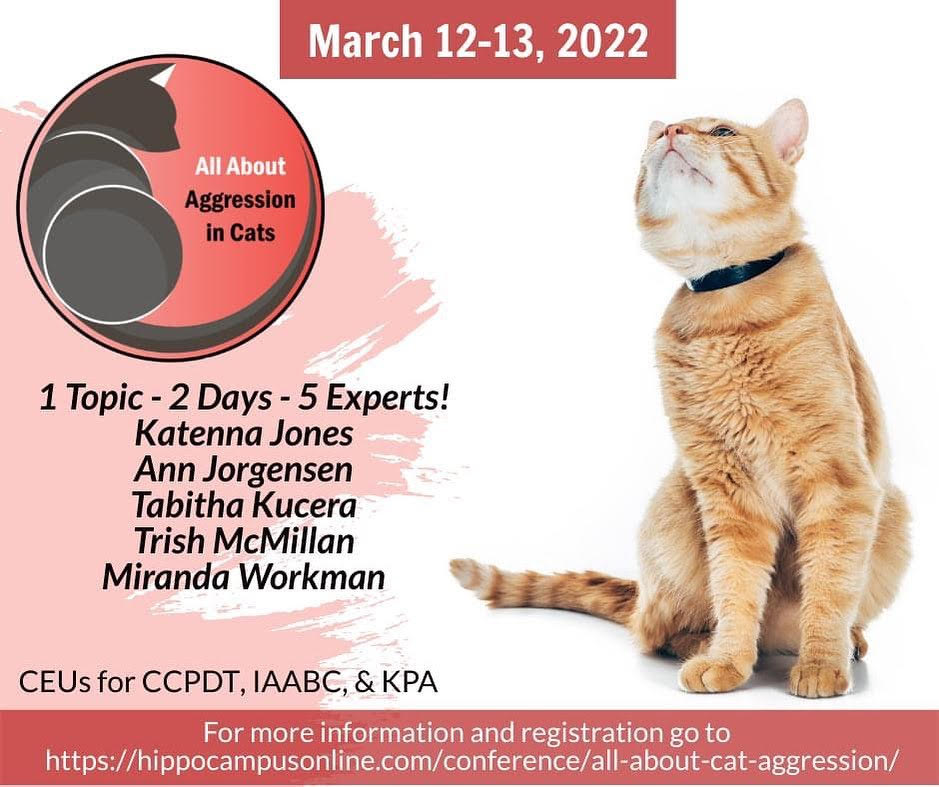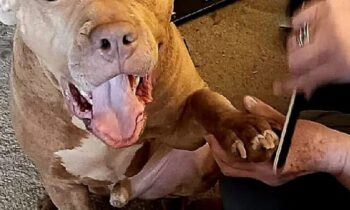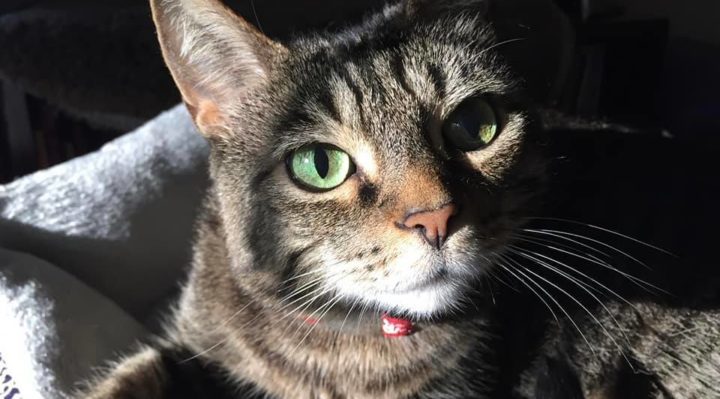
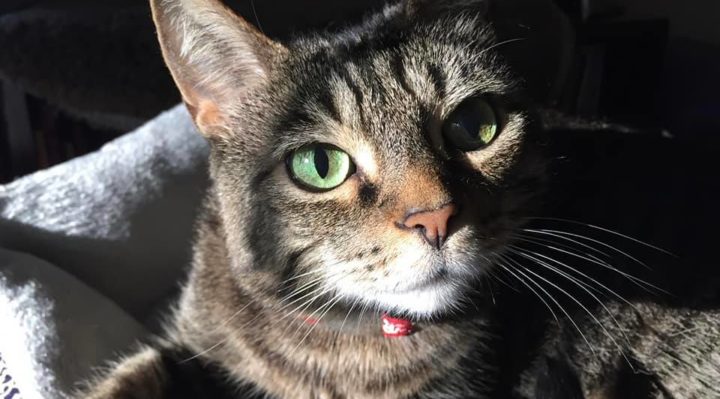
Last week, when we discussed solving cat behavior problems positively, suggested solutions included attention, exercise, enrichment, and especially feeding. How, when, where and what a cat is fed are critical components of every cat’s life. We were lucky to meet, during the discussion about cats, an animal professional who is very knowledgeable on this important subject.
We have so many questions about feeding cats!
Ann Jorgensen is an instructor for Shelter Behavior Hub and owner of Animal Shelter Consulting. Ann’s curiosity about animal behavior was sparked at a young age and led to a fruitful career in academia, where she obtained her B.Sc. from Oregon State University, her M.Sc. from Washington State University, and started her doctoral studies at University of Idaho in Neuroscience studying the behavioral changes of T. gondii on the common mouse.
Ann has been working with sheltered animals since 2000 and has been hired as a paid consultant for rescues and shelters across the country for the last 22 years. In 2016, Ann transitioned to animal welfare full-time. Most recently, she was Director of Animal Care and Regulation for one of the largest geographical municipal agencies in the U.S., with 26,000 square miles. In 2021, Ann was invited to work with Shelter Behavior Hub, bringing her expertise to others in the animal-welfare community around the world, bringing her passion for education and animal welfare together.
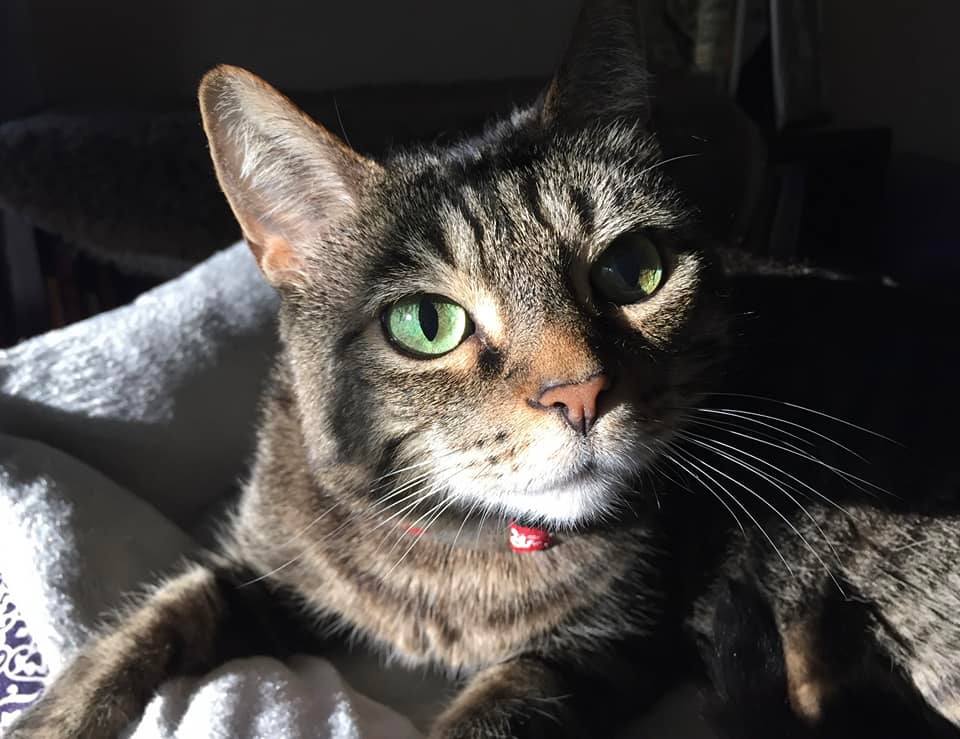
Photo by Trish McMillan
With thanks to Trish McMillan for introducing us to Ann Jorgensen, I’ll now turn the page over to Ann, who has a lot to tell us about feeding cats:
It is very important to know a bit about the physiology of our feline friends when we consider how best to feed for health and behavior. First, they are obligate carnivores—this means they require a primarily meat-based diet that is high in protein and essential nutrients. Second, they consume many small meals per day; based on a study of free-ranging feral and domestic cats, they consume up to 30 meals per day, ranging from insects to small mammals. Another important note on their behavior is that cats are crepuscular, which means they are most active at dawn and dusk, when they typically do most of their hunting.
One of the take-homes I always stress is that cats are NOT dogs. Cats have completely different needs than dogs. In fact, feeding cats dog food can cause medical issues and even death due to lack of essential nutrients like taurine.
The good news is that cats are finally getting the attention they deserve, and we are in a boom of new research. We now know that cats are one of the few animals that do not prefer to “work for their food.” We have seen a boom of food puzzles and food dispensing toys for dogs, who do prefer to eat through these puzzles—but not our feline royalty. In fact, it has been shown that cats fed through food puzzles increase hunting behavior by 33% in indoor/outdoor cats.
We have found that stimulating prey behavior through play followed by a small meal is most natural and can meet both mental and physical needs of the cat. When diet choice included dry and wet food treatments, cats averaged 16 meals per day at 4.8 gm/meal and little daytime activity. Cats consumed more water, through wet food but drank more water when on a dry food diet.
A recent study found that feeding 3–4 smaller meals throughout the day not only increased activity, but also decreased nighttime activity and increased the consumption of water.
Technology
We all know that our busy lifestyles can make feeding this many meals difficult, but technology has now caught up, giving us options for multi-cat households, with feeders that dispense food based on a magnetic collar or even a microchip, plus app-driven feeders that can dispense via your phone, and so much more. While kitty is sure to enjoy some play time with their person, we can now make sure they are entertained and fed even when we aren’t home.
There is also the benefit of food NOT coming from you, especially if you have a begging cat or if you get the 5:00 a.m. paw in the face for food. I have personally used automated food dispensers for many years and have never had a begging cat. One trick if you don’t want to invest in multiple auto-feeders is to use cat doors that are regulated by chip or dongles to separate feeding areas for cats.
Toys and Food
Also, a fun little fact is that kittens learn their feeding preference based on what mom taught them, and in the case of fostered litters this could be their human surrogate. This is something I see as a source of frustration for many human kitty parents. There have been times I’ve had to tell a client that their kitty is a grounder. It can be a touchy subject, especially if kitty has an arsenal of aerial toys. Yes, some cats prefer to hunt ground-dwelling animals, while others are strictly aerial hunters and still others are ambi-hunters. My short-legged cross-eyed colony cat, Stuart Smally, prefers to hunt flying animals and is particularly fond of “sky raisins” (aka flies) even though his vision is less than ideal.
A great number of toys are out there that help to kick in their natural prey behavior, so take time to find the right toys. Once you have a few options, using these toys to kick in their predatory instincts followed by a small meal will not only meet their natural instincts, it can help with human bonding. I’ve termed this “play, prey, feed.” I have also used this style of feeding in some of my most challenging behavior cases. There are many implications for behavior modification including intra-household issues with other cats and animals.
Are food companies making our cats fat?
Another surprising tidbit about our feline friends is that they have a very poor sense of taste, recognizing mostly bitter tastes and having no sense for sweets at all. So how can they be so picky or not picky at all?
Cats have a very acute sense of smell; new research has shown that a cat’s acuity of smell is better than a dog’s! Cats can also smell through the roof of their mouth, and this is thought to play an important role in appetite and food preference. Pet-food companies have capitalized on this sense of smell and use many strategies to make cat food as yummy smelling as possible, which has led to hedonistic eating. Yes, your little chubby feline is eating just for fun. Therefore, free-feeding some felines is a bad idea and can easily lead to obesity. It is best to measure out how much food kitty needs for the day and then break meals up into several small meals a day.
Dry vs. wet
The biggest challenge can be what your kitty was exposed to as a kitten. Some cats that have only been fed dry kibble have a hard transition over to wet food or even changing brands of dry food. Research indicates that cats fed wet food have the advantage of taking in more moisture. Cats are prone to kidney issues, especially as they age, so keeping their fluid intake up can be very important. Some great tips for transitioning a kitty to a new food is to offer it as a side dish and let them have the option of tasting it over several trials. Also, it has been demonstrated that cats and particularly senior cats like their food warm, and this can help with transitioning food, too.
Specialty breed and raw diet
With the popularity of hybrid cats such as Bengals and Savannahs comes a whole new diet requirement. These cats often have shortened intestines especially designed to eat raw meat. A raw diet has always had its proponents and I do think there is merit to this diet for certain breeds and animals with medical conditions. There is now a whole industry that provides a balanced raw diet that you can purchase or even make yourself. Surprisingly, it can be the most modestly priced option and for those on a restricted income, this might be the ticket to high-quality food at a fraction of the price—as low as pennies per day. Your biggest investment would likely be a meat grinder and a good book on creating a balanced diet.
Another thing to keep in mind is that if you have a purebred cat, their needs can vary compared to your typical domestic kitty. I am a lover of Sphynx cats. These kitties are rarely overweight due to their increased caloric needs, so it becomes important to work with your vet on what an ideal weight should be and to feed for that weight. Feeding a balanced raw diet greatly reduces the output in the litterbox, as well as odor.
Best food practices
* Start kittens early with a variety of foods (see Kitty Buffet, below).
* Get kitty accustomed to automated products.
* Get rid of the bowl.
* “Play, prey, and feed.”
* Measure the amount of food for the day and break it into 4–6 meals.
* If kitty needs to lose some weight, always check in with your vet first. Reducing weight too quickly can lead to a condition called fatty liver; this can be life-threatening.
* Your vet will likely recommend that you start a weight-loss program that includes diet and exercise.
* Not all vets specialize in diets, so be cautious if the recommendation is to put your kitty on a reduced-calorie diet. There are veterinary dieticians who can give you a lot more information and even create a weight-loss plan.
Kitty Buffet: Using paper plates, create a buffet in a closed room. Start with 6–10 plates, depending on how many you can track. Then add about a teaspoon of different types of food—wet paté, wet gravy, and dry. You can start with a flavor theme, like chicken vs. turkey, then salmon vs. beef. Most importantly, mark the plates so you know which one kitty goes back to. The most favorite will often get extra licks even after it is gone. Then you can take kitty’s top picks and repeat until you end up with at least four foods that your kitty finds yummy. Unless kitty is having issues eating, I keep the top two foods for special occasions. Remember, pet-food companies make foods super-yummy, which can result in overeating.
Cats do not like food puzzles; use may backfire.
Delgado, Mikel M., Brandon Sang Gyu Han, and Melissa J. Bain. “Domestic cats (Felis catus) prefer freely available food over food that requires effort.” Animal cognition (2021): 1-8.
Food puzzles increase hunting behavior in indoor/outdoor cats.
Cecchetti, Martina, et al. “Provision of high meat content food and object play reduce predation of wild animals by domestic cats felis catus.” Current biology 31.5 (2021): 1107-1111.
Kane, E., Q. R. Rogers, and J. G. Morris. “Feeding behavior of the cat fed laboratory and commercial diets.” Nutrition Research 1.5 (1981): 499-507.
Lots of good information, although some is outdated, like the recommendation for food puzzles.
https://www.ncbi.nlm.nih.gov/pmc/articles/PMC7415653/
Good info on how and why cats find food yummy, VNO, poor taste.
Pekel, Ahmet Yavuz, Serkan Barış Mülazımoğlu, and Nüket Acar. “Taste preferences and diet palatability in cats.” Journal of Applied Animal Research 48.1 (2020): 281-292.
Seniors prefer warm food
Eyre, Ryan, et al. “Aging cats prefer warm food.” Journal of Veterinary Behavior 47 (2022): 86-92.
Raw food diet
Stogdale, Lea. “One veterinarian’s experience with owners who are feeding raw meat to their pets.” The Canadian Veterinary Journal 60.6 (2019): 655.
